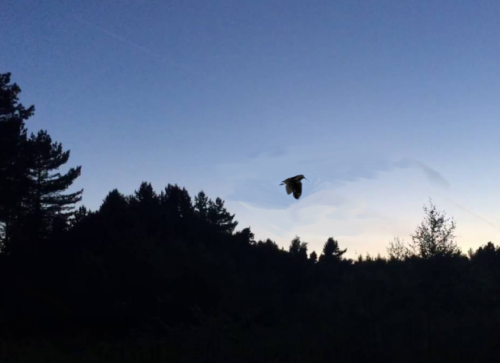Our resident woodcock are cryptic and elusive woodland birds. The best way to survey for them is to record breeding males at dusk in a woodland clearing or ride. To find out if you have breeding resident woodcock:
- You’ll need warm clothes, torch, notepad and insect repellent. A second person can provide moral support in the dark! It’s a good idea to learn the croaking and squeaking calls of the male woodcock.
- Choose a woodland ride or clearing that you can get to safely at night, and where you have a good view of the sky.
- Make 3 visits to the count point on calm dry nights, at least one week apart, between the beginning of May and the end of June for the best chance of seeing male woodcock displaying (roding), when they fly in circuits above woodland making croaking and squeaking calls to attract females.
- On arrival, record the location, date and time. Stay still and listen/watch for 15 minutes before and 45 minutes after sunset.
- For each woodcock pass, record the time of the pass and the number of birds involved (usually one, occasionally two).
- Use the maximum number of birds recorded across the 3 visits as a measure of woodcock abundance. Count every year in the same place to monitor numbers over time.
- The Game & Wildlife Conservation Trust, in conjunction with the British Trust for Ornithology, co-ordinates a national survey of Britain’s breeding woodcock population every 10 years. Some volunteers visit their survey sites annually, providing counts that help ‘fill in the gaps’ between the national surveys You can download survey forms and register online to be allocated a wood near you, or register your own site by email.
Male roding woodcock © Chris Swaine

